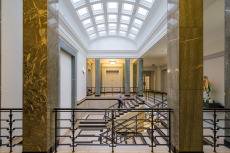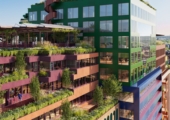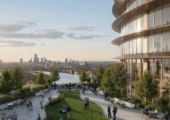October 27, 2014
EU’s targeted 2030 greenhouse gas cuts receive lukewarm welcome from industry
 The states of the European Union (EU) have reached an agreement to cut greenhouse gas emissions by 40 percent by 2030, compared with 1990 levels. The EU says it aims to meet the new target in the most cost-effective ways possible. The EU has also set itself the target of generating 27 percent of energy from renewable sources over the same period. The new target is set to remain independent of any more ambitious cuts set by individual member states suggesting that the EU sees the new targets as being a minimum ambition. The new targets will also take account of the EU’s internal energy markets and the degree of integration of members states. The EU, in its announcement, claims that the market for renewable energy is dependent on a well integrated internal energy market, co-ordinated at regional level. The new announcement has been broadly welcomed by industry sources albeit with some significant caveats.
The states of the European Union (EU) have reached an agreement to cut greenhouse gas emissions by 40 percent by 2030, compared with 1990 levels. The EU says it aims to meet the new target in the most cost-effective ways possible. The EU has also set itself the target of generating 27 percent of energy from renewable sources over the same period. The new target is set to remain independent of any more ambitious cuts set by individual member states suggesting that the EU sees the new targets as being a minimum ambition. The new targets will also take account of the EU’s internal energy markets and the degree of integration of members states. The EU, in its announcement, claims that the market for renewable energy is dependent on a well integrated internal energy market, co-ordinated at regional level. The new announcement has been broadly welcomed by industry sources albeit with some significant caveats.














 There is now an unstoppable energy for radical change in the way that companies of all sizes conduct their Corporate Social Responsibility duties. There are compelling economic and social reasons for companies to construct new ways of thinking and practice around CSR that go way beyond just doing something worthy or nice, from building effective partnerships to attracting top employees. Some companies prefer terms like ‘corporate responsibility’, ‘corporate conscience’, ‘corporate citizenship’, ‘social performance’, ‘sustainability’ or even ‘future-proofing’ over CSR. But the core CSR principles are that a business voluntarily commits to embracing responsibility for its actions and to impacting positively on the environment, on society and on consumers, employees and other stakeholders.
There is now an unstoppable energy for radical change in the way that companies of all sizes conduct their Corporate Social Responsibility duties. There are compelling economic and social reasons for companies to construct new ways of thinking and practice around CSR that go way beyond just doing something worthy or nice, from building effective partnerships to attracting top employees. Some companies prefer terms like ‘corporate responsibility’, ‘corporate conscience’, ‘corporate citizenship’, ‘social performance’, ‘sustainability’ or even ‘future-proofing’ over CSR. But the core CSR principles are that a business voluntarily commits to embracing responsibility for its actions and to impacting positively on the environment, on society and on consumers, employees and other stakeholders. 








October 17, 2014
The solution to complex issues like green building is to become more sophisticated
by Paul Goodchild • Comment, Environment, Facilities management, Workplace design
(more…)